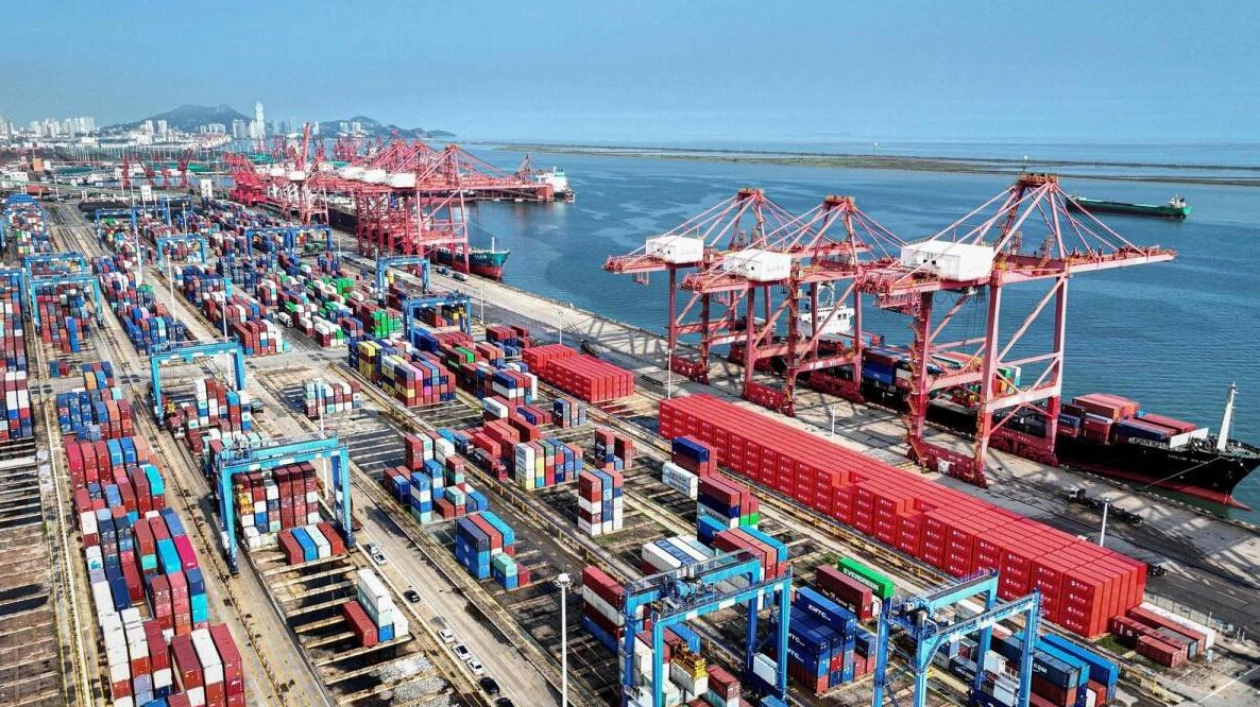China's exports surged at their fastest rate in nearly 1-1/2 years in August, indicating that manufacturers are expediting orders in anticipation of impending tariffs from an increasing number of trade partners. Meanwhile, imports fell short of expectations due to weak domestic demand. This mixed trade data underscores the challenges Beijing faces as policymakers strive to boost overall growth without becoming overly dependent on exports, especially given the tightening of consumer spending.
China's economy has struggled over the past year, exacerbated by a prolonged downturn in the property sector. A recent survey revealed that exports are stagnant, and factory gate prices are at their lowest in 14 months, suggesting producers are cutting prices to attract buyers. Outbound shipments from the world's second-largest economy grew 8.7% year-on-year in August, the fastest pace since March 2023, according to customs data. This exceeded a forecasted 6.5% increase in a Reuters poll of economists and surpassed the 7% rise in July. However, imports only increased by 0.5%, missing the expected 2% boost and down from the 7.2% growth in the previous month.
"The robust export performance and trade surplus are favorable for economic growth in the third quarter and the entire year," noted Zhou Maohua, a macroeconomic researcher at China Everbright Bank. "Nevertheless, the global economic and geopolitical environment is complex, and China's exports face numerous headwinds." Economists have cautioned that Beijing risks missing its growth target if it becomes too reliant on exports, following a series of lackluster data. This has increased pressure on policymakers to implement more stimulus measures to revive the economy.
Outbound shipments to the European Union grew 13.4% year-on-year in August, marking the largest increase among China's major export markets, followed by an 8.8% rise in sales to Southeast Asian economies. Chinese exports to the US increased by just 4.9% annually last month, but imports grew 12.2% over the same period, the highest among major import markets. Rising trade barriers pose another significant obstacle, threatening China's price-driven export momentum. China's trade surplus with the United States widened to $33.81 billion in August from $30.84 billion in July. Washington has frequently cited the surplus as evidence of the one-sided trade favoring the Chinese economy. Brussels' trade policy has also become more protective, and Beijing's efforts to negotiate with the EU to ease tariffs on Chinese electric vehicles (EVs) have made little progress.
As China seeks to redirect more exports towards Southeast Asia and South Asia, it faces resistance there as well. India plans to raise tariffs on Chinese steel, Indonesia is considering heavy duties on textile imports, and Malaysia has initiated anti-dumping investigations into plastic imports from China and Indonesia. Despite these challenges, some analysts anticipate that outbound shipments will weather the storm, given the relatively low value of the Chinese yuan and the ease with which exporters can re-route their goods to avoid tariffs.
The lower-than-expected imports might not augur well for exports in the coming months, as nearly a third of China's purchases are parts for re-export, particularly in the electronics sector. China's commodities purchases also reflected a bleak domestic outlook, with iron ore imports down 4.73% last month from a year earlier, as weak demand in the country's construction sector affected steelmakers. Additionally, while China bought a record 12.14 million metric tons of soybeans in August, there were ominous signs for the production powerhouse's future export performance. Analysts suggest that the buying spree was driven by traders taking advantage of lower prices to stockpile amid concerns that trade tensions with the US could escalate if Donald Trump returns to the White House next year.
Overall, while August exports were positive for growth, "it remains uncertain whether this momentum can be sustained," said Lynn Song, ING's chief economist for China. "In addition to incoming tariffs and the sluggish export orders data of the last few months, if global growth momentum begins to slow, this could also drag on export momentum."






